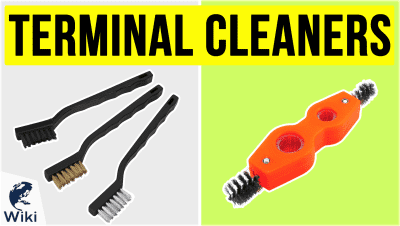The 10 Best Carburetor & Throttle Body Cleaners

This wiki has been updated 34 times since it was first published in October of 2016. Consisting mainly of the same base chemicals, carburetor and throttle body cleaners can be used to remove dirt and grime from some of your vehicle's most important components, leaving them in better condition and improving the overall life of your engine. They are not always interchangeable, however, and you should check you car manual for the recommended product before purchase. When users buy our independently chosen editorial selections, we may earn commissions to help fund the Wiki.
Editor's Notes
April 03, 2019:
While regularly using any carb and throttle body cleaner is undoubtedly a better idea than using none at all, it's still worth considering the specific pros and cons of a particular brand in order to maximum the effectiveness of your automotive maintenance efforts. The options on our list feature a variety of different formulas that are tailored to address problems affecting an equally wide range of vehicle types, from modern performance cars to lawn mowers and farming equipment. The Gunk M4814-12PK, for example, is great for the latter, while the 3M 08867 is suitable for the former. Overall, we thought the WD-40 Fast-Acting Specialist best for most users, since its all-purpose formula works on just about anything.
What Does Your Carburetor Do, Anyway?
There is nothing more terrifying than standing around with a bunch of people, staring down into a raised car hood.
There is nothing more terrifying than standing around with a bunch of people, staring down into a raised car hood. Are you supposed to grunt approvingly? Should you ask if the Hemis are lifted, or if the casters are turbocharged, or other jargon you (clearly) don't understand?
We can't help you with most of that — but we can teach you what the carburetor does.
Most internal combustion engines have four-stroke cycles. This means that the engine has four distinct operations while running: intake, compression, combustion, and exhaust.
Basically, air and a little bit of fuel are sucked into a cylinder with a piston inside. This piston then compacts that air and fuel by pushing them towards the end of the cylinder; once there, the spark plugs ignite the fuel, creating combustion. This forces the piston back down to the bottom of the cylinder as the exhaust is released, and the resulting force is what powers the vehicle.
The carburetor is responsible for making sure there's a proper mix of fuel and air sprayed into the cylinder during the intake cycle. If it doesn't include enough fuel, the engine either runs poorly or not at all. Conversely, if too much is put in, it can flood or bog down the engine.
The location of the carburetor will vary from vehicle to vehicle, but it should always be somewhere near the intake manifold. There should be fuel lines running to it, so that's a good way to track it down.
Nowadays, carburetors are slowly being phased out in favor of fuel injection systems in most larger forms of transportation, but smaller vehicles like lawnmowers still use them. These new systems usually allow for more accurate fuel mixtures, as well as a more rapid response to user input.
Some carburetors have something called a throttle body, which are also found in fuel-injected engines. Throttle bodies regulate the air and fuel mixture that enters the carburetor, so it's all part of the same extended system.
If you still have a vehicle that uses a carburetor, it's a good idea to keep it well-maintained — and you might want to learn how to do that yourself, since mechanics that know how to work on carburetors are going the way of the dodo.
Also, learn whether those Hemis are lifted, or if that question even makes any sense. Seems like a good thing to know.
The Importance of Keeping Your Carburetor Clean
Since your carburetor has to spray a mixture of fuel and air into your car's cylinders, it goes without saying that it's important to keep it clean. Dirt, grime, and fuel residue can clog the valve, preventing the mixture from being properly released.
There are a few telltale signs that your carburetor might be clogged. The most obvious is that the vehicle won't start. Granted, there are other possible explanations for why an engine might not start, but a dirty carburetor is definitely up there.
Granted, there are other possible explanations for why an engine might not start, but a dirty carburetor is definitely up there.
If you hear popping sounds in the engine, that could mean that there's not enough fuel being mixed in. Conversely, if you see a ton of black smoke pouring out of your exhaust pipe, then it's likely that your carburetor is mixing in too much fuel.
Once you get that carburetor clean, though, you should see a number of benefits. Improved fuel efficiency is a big one, as your car won't have to work as hard to operate, so don't be surprised if your miles-per-gallon goes up.
Likewise, once your engine starts getting fed a healthy fuel diet, you should see your acceleration be much more responsive. It should start right up once the carburetor's clean as well, rather than struggling to turn over.
It's not just cars that need to worry about carburetor performance, either. Lawnmowers can be severely impacted by a clogged carburetor, which can prevent them from starting and lead to poor performance when they do (and the last thing you want is for mowing the lawn to take even longer). All that dirt and debris that the blades kick up can get in the fuel system, creating obstructions, so you should clean it regularly, especially if it's been sitting for awhile without being used.
Having a clean carburetor seems like a small thing, but it can have a far-ranging impact on your vehicle's performance, so it's worth adding it to your spring cleaning list.
Choosing — and Using — a Carburetor Cleaner
There are two basic types of carburetor cleaner: sprays and fuel additives.
To use a spray, you have to actually be able to access the carburetor, which isn't always easy, depending on the vehicle. It usually involves removing the air filter and unhooking a bunch of hoses, so be sure you know what you're doing before you start.
Once you've got the carburetor exposed, spray it down with your cleaner.
Once you've got the carburetor exposed, spray it down with your cleaner. You can gently brush the outside to remove caked-on gunk. Be sure to get the solvent in all of the vents and openings, or else you'll have to do it all over again.
Some spray options have multiple uses, such as being able to clean spark plugs or scrub up oil stains, so you can potentially kill two birds with one stone (or clean two messes with one solution, perhaps).
Fuel additives are much easier to use. All you have to do is open your gas tank and pour the cleaner in, and then it will clean the carburetor from the inside out while the engine's running. This isn't as thorough, however, as pour-in cleaners aren't very good at clearing clogs. Consider it as more of a way to keep your engine clean, rather than get it that way.
Once you find a quality cleaner, expect to use it about every six months or so. Doing so will keep it in mint condition, while also extending its lifespan.
Or you can just get a new car twice a year, if all of this sounds too difficult. It's up to you.















